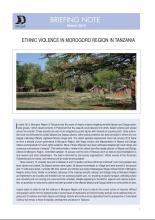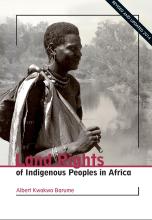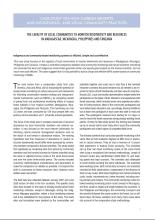Land Library
Welcome to the Land Portal Library. Explore our vast collection of open-access resources (over 74,000) including reports, journal articles, research papers, peer-reviewed publications, legal documents, videos and much more.
/ library resources
Showing items 1 through 9 of 11.Land area of 3131.5451 hectares in Ou Chum district, Ratanakiri province has downsized from Forest Cover 2002 and reclassified as “State Private Land” for granting purpose as communal ownership to 4 Krung indigenous communities in Puy commune, Ou Chum district, Rattanakiri province.
Land area of 846.8997 hectare in Ou Chum district, Ratanakiri province has downsized from Forest Cover 2002 and reclassified as "State Private Land" for granting purpose as communal ownership to 165 families of Kreung indigenous community on 20 land parcels including 10 parcels for residential, 1
This briefing note call attention to the ongoing situation of harassments and arbitrary arrests of human rights defenders in Loliondo in northern Tanzania.It offers an account of the recent events taking place in the area and background information.
Land area of 605.8134 hectare in Ou Chum district, Ratanakiri province has downsized from Forest Cover 2002 and reclassified as "State Private Land" for granting purpose as communal ownership to 96 families of Tumpoun indigenous community on 16 land parcels including 07 parcels for residential, 0
Land area of 1496.3127 hectare in Ou Chum district, Ratanakiri province has downsized from Forest Cover 2002 and reclassified as "State Private Land" for granting purpose as communal ownership to 205 families of Kreung indigenous community on 21 land parcels including 02 parcels for residential,
Eviction of Indigenous Peoples from their ancestral lands is one of the most destructive and degrading mitigation strategy performed by modern governments in developing countries to address climate change.
In early 2015, Maasai and Datoga citizens living in the Morogoro region of Tanzania were victims of deadly, ethnic violence.
This revised and updated edition of Albert Kwokwo Barume’s book from 2010 reflects some of the latest developments affecting Africa’s indigenous peoples and their land rights.
This case study focuses on the capacity of local communities to monitor biodiversity and resources in Madagascar, Nicaragua, Philippines and Tanzania.






